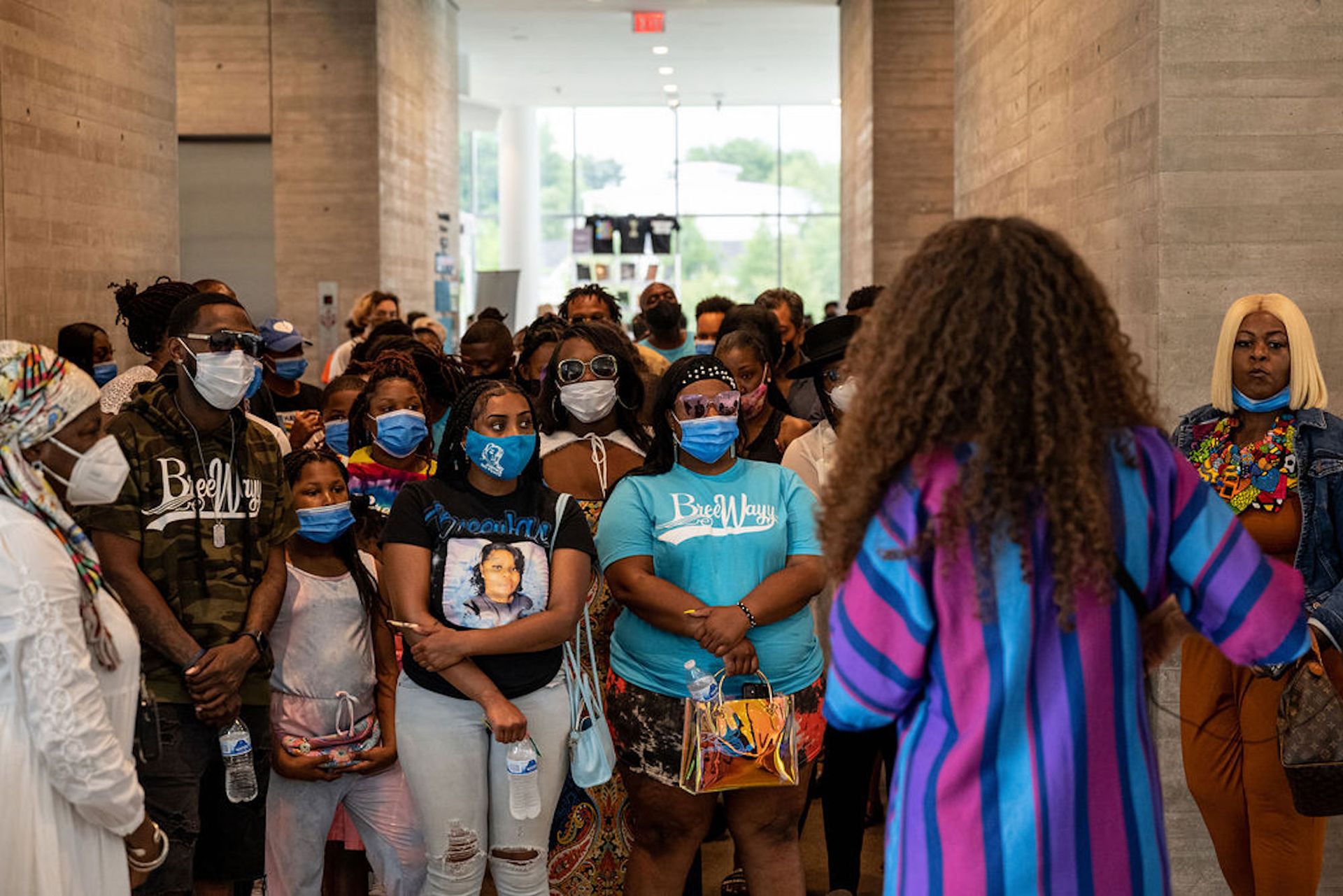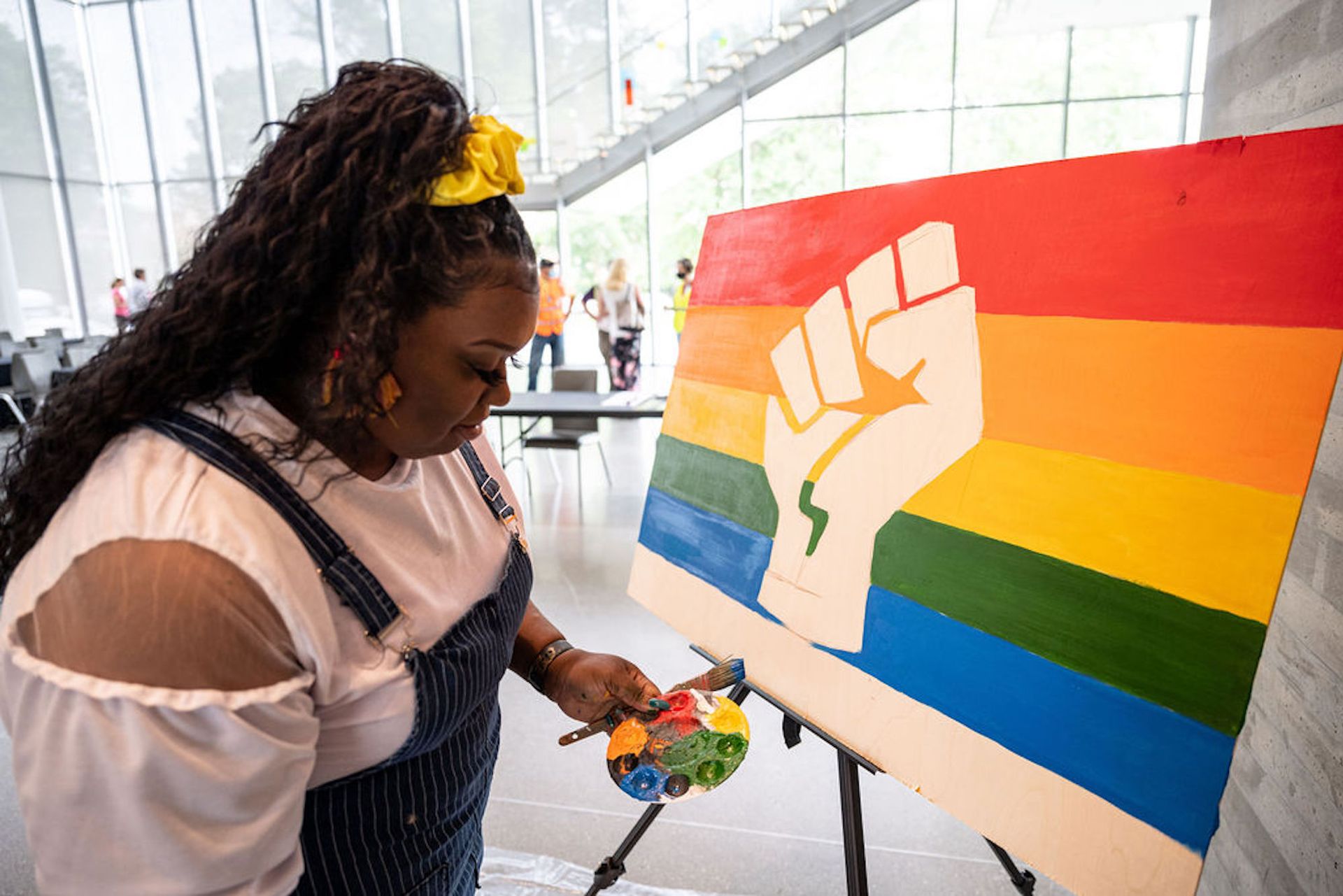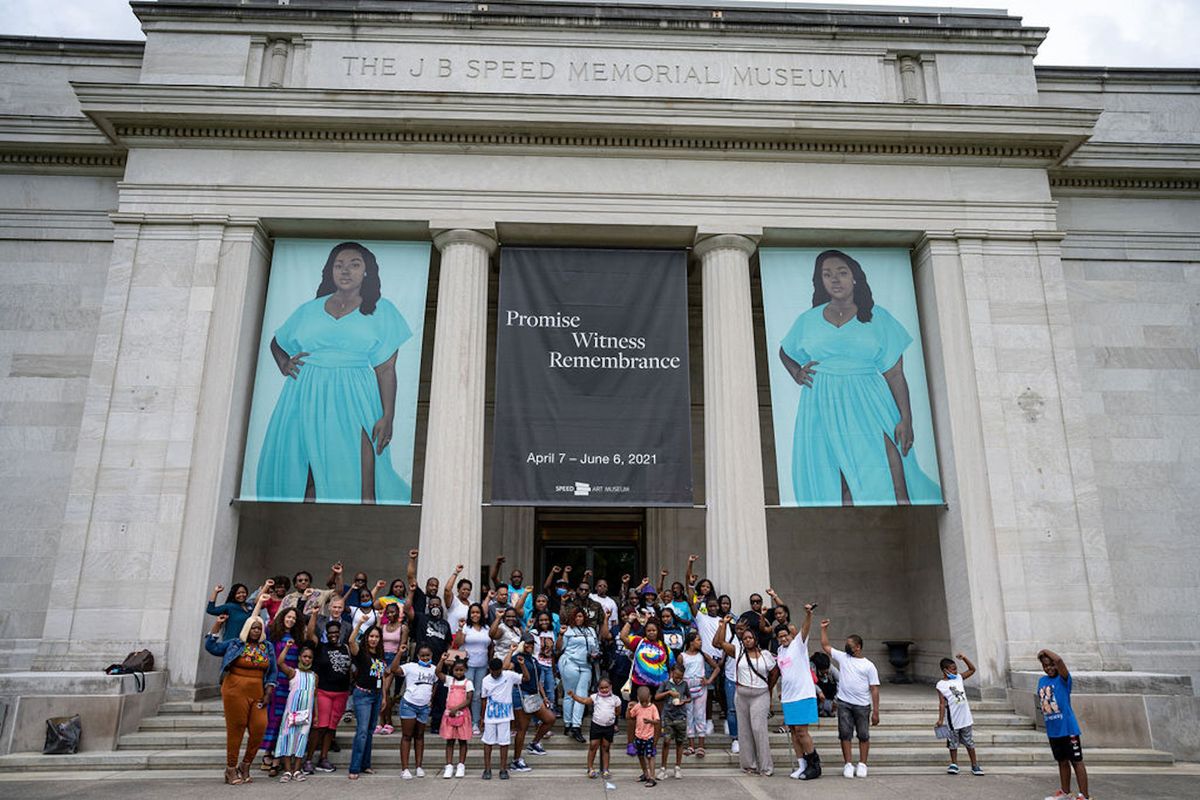Taking up the charge of its nearly 100-year history as the oldest and largest art museum in Kentucky, the Speed Art Museum in Louisville has made its mission to create opportunities for the entire community to connect deeply and personally with art. My colleagues and I believe that in order to be truly inclusive, museums must represent their communities holistically and engage directly with the issues that are most important to the people they serve.
In March 2020, when the tragedy and injustice of Breonna Taylor’s killing during a raid by Louisville Metro Police Department rocked the community and ignited a spark throughout the country, the museum (under the leadership of my predecessor, Stephen Reily) knew it was time to act. The question was not “Should we respond to this moment?” or even “How do we respond to this moment?” but rather “What do we believe we can offer to the community at this time, and what is the best way to do it?” Amy Sherald’s generous offer to exhibit her portrait of Taylor planted the seeds for Promise, Witness, Remembrance, the Speed’s 2021 exhibition reflecting on Taylor’s life, death and the year of protests that followed. The objective was to use art to provide a platform and timely resources for open discussion, deep personal reflection and community healing.
Community perspectives
Curated by Allison Glenn, the exhibition was guided by a national advisory panel supporting the curatorial process; a research committee to gather public feedback; and a local steering committee of Bipoc (Black, Indigenous and people of colour) residents, assembled by Toya Northington, the Speed’s community engagement strategist, to ensure the exhibition and programming reflected the perspectives of local community members. Taylor’s family, in particular her mother, were integrally involved with every decision; the museum could not have earned the trust of the community without first earning their blessing and support. The confluence of these groups made it possible to take the exhibition from idea to reality in a matter of months, and represented the next extension of the Speed’s leadership and engagement model—demonstrating that embracing an iterative process and opening up the very workings of the institution allows for a real-time, effective response to community needs.

Visitors to the Speed Art Museum's exhibition Promise, Witness, Remembrance. Photo by Jon P. Cherry, courtesy of the Speed Art Museum.
Promise, Witness, Remembrance resonated deeply with the Louisville community and with audiences around the country, creating opportunities for conversation and catharsis that bridged connections between highly personal experiences with gun violence and the national outcry over racial injustice. But Taylor’s unjust killing was far from an isolated incident; in 2021 alone, Kentucky saw almost 400 deaths from gun violence, disproportionately affecting Black residents, and the state continues to face stark racial and class disparities across education, housing, policing and incarceration, health outcomes and other key indicators of systemic inequity that ripple through the Louisville community.
When I arrived at the Speed in September 2021, shortly after the exhibition had closed, I knew we must make a commitment to carry forward these lessons on the power of listening and engagement, incorporating them more deeply on an institutional level. By taking an approach that is community-driven and draws on the existing strengths and capacities of the people, the Speed has transformed its programming to reflect the needs and voices of its public, broadening its audience and continuously adapting to new input and opportunities.
A cornerstone of the Speed’s public programming is Community Connections, a workshop series that creates a platform for marginalized community members to explore new modes of self-expression and collective reflection through art-making and discussion. Launched in 2018, the program partners with existing community groups to facilitate opportunities that fulfill a need or address an ongoing issue.
One recent project, The Promise, is a direct extension of this commitment to respond directly to issues facing Louisville’s Black community. Led by the multimedia artist Roberto Visani, the three-month programme brought together Black community members who have been affected by gun violence to explore the history of firearms in the US, learn about artists whose work involves guns and create their own new works, currently on view at the Speed (until 23 October). Crucially, The Promise is structured as a participatory action research project, using a deeply intentional framework and methodology to help community members capture their own experiences in a way that emphasises ownership, agency and advocacy for social change.
Since Promise, Witness, Remembrance, we have expanded the local steering committee to an institutional level, advising on initiatives from programming and exhibitions to hiring and external communications. The research committee has also continued, ensuring the museum is serving the community effectively. We have expanded relationships with local organisations deeply rooted in the Black community, creating lasting partnerships that maximise shared resources and reach. This summer, we also created two new roles to continue this crucial work, with Northington becoming our inaugural director of equity, inclusion and belonging and Fari Nzinga spearheading new, intersectional education initiatives as curator of academic engagement and special projects.

A participant in a public programme held at the Speed Art Museum during the exhibition Promise, Witness, Remembrance. Photo by Jon P. Cherry, courtesy of the Speed Art Museum.
The goal of the Speed’s approach is to make the museum a better neighbour to its community—an institution that measures success not by how many people it brings in through its doors but by how well it brings its resources outward; an institution that engages directly with timely issues, uplifts local voices and uses art as a catalyst for personal and collective transformation. Becoming a truly responsive museum means meeting community needs and priorities as they evolve. This is only possible when museums are willing to embrace the rich, rewarding messiness of an iterative, collaborative process: sharing power, seeking and internalising feedback, and measuring impact on the community’s own terms.
- Raphaela Platow is the director of the Speed Art Museum in Louisville Kentucky


